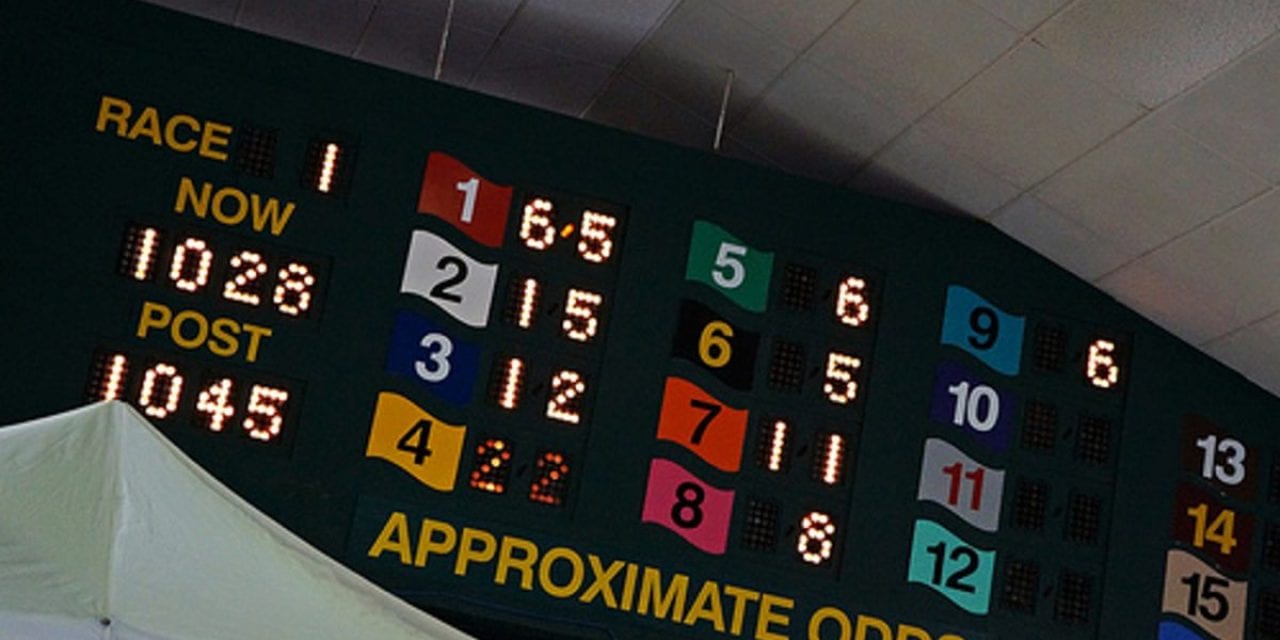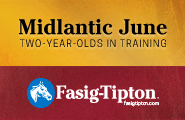> Atlantic City Race Course
> Beulah Park
> Colonial Downs
>Delaware Park
>Dover Downs
> Freehold Raceway
> Harrah’s Philadelphia
> Harrington Raceway
> Hollywood Casino at Charles Town Races
> Hollywood Casino at Penn National Race Course
> Mohegan Sun at Pocono Downs
> Northfield Park
> Parx Casino and Racetrack
> Ocean Downs
> Raceway Park
> Rockingham Park
> Rosecroft Raceway
> Sam Houston Race Park
>Suffolk Downs
> Thistledown[/boxify]
by Teresa Genaro
Earlier this month, the Mid Atlantic Cooperative named Phil O’Hara its executive director, which might lead the casual racing fan to ask, “What’s the Mid Atlantic Cooperative?”
According to Chris McErlean, vice president of racing for Penn National Gaming, which owns Penn National, Charles Town, and Sam Houston along with casinos across the country, the Cooperative was created in 1998 to increase the bargaining power of individual racetracks in negotiations for simulcast signals.
The core membership at that point were tracks, as the name suggests, in the Mid Atlantic region: Philadelphia Park (now Parx), Delaware Park, Laurel, Pimlico, Colonial Downs, Penn National, and Charles Town. Monmouth and the Meadowlands joined shortly thereafter, and over time, some early arrivals left and other tracks arrived. The group is now a somewhat far-flung collection of about 20 tracks, both harness and flat.
Explaining the history of the organization, McErlean said, “The Mid Atlantic tracks had worked together in the past on other initiatives and in general had a pretty good working relationship. At the time, a lot of other racing organizations were consolidating, and there was a lot of movement in simulcasting rates—movement upward. We wanted our members to get a preferred rate, given the volume of wagering from the member tracks.”
He estimated that the tracks in the Cooperative generate about $1 billion dollars in simulcasting wagering annually.
The Cooperative works only on purchasing signals from other tracks; individual tracks continue to negotiate independently on selling their simulcast signals.
New director O’Hara brings experience with both the Mid Atlantic racing circuit and the wagering side of the business. He worked at Penn National Gaming from 1985 to 2000 in a variety of capacities, the last of which was as executive vice president of pari-mutuel operations.
“What the Cooperative does is nothing the members can’t do on their own,” he explained, “but there’s strength in numbers.”
In addition to increasing the bargaining power of its members, said O’Hara, the Cooperative also provides a staff, obviating the need for duplicate positions at individual tracks.
In discussing the organization, he indicated that many of the details involving membership are confidential, though he did say that when a track indicates interest in joining the Cooperative, current members are contacted to gauge their interest in expanding the organization. He acknowledged that in the past, some applicants have not been accepted.
“Our members have to have like-minded business interests,” he said. “They have to operate to run races, they have to contribute to purses, they have to maximize what they can get out of their markets given their state racing licenses.”
O’Hara, currently based in Lexington, Kentucky, is the organization’s second executive director; he succeeds Martin Lieberman and in addition to having worked at Penn National Gaming, he is a former president of Equibase Company. He also works as an industry consultant and since 2008 has worked with the Daily Racing Form on a variety of projects, including partnerships with racetracks, trying he said, to “create synergies” in a number of areas, including marketing. He will continue in his role with the Form.
O’Hara’s work at Equibase gave him, he said, “outreach to the entire industry” that his previous positions had not, experience that he expects will be useful in his new role.
“There are few racetracks across the country,” he said, “that I haven’t visited or been involved with.”













I sure hope phil ohara gets this message I have been trying to reach him for three weeks ;;;the dirty low life tacticts you are holding horseplayers hostage is nothing but low life greedy dirty rotten scoundrels all across the board this is the third month this stupid impasse has going on..all you low lifes are sitting back and laughing saying they will all be back not this time you have already lost 25%of your fan and after Saturday feb 7th you will lose many more one of th biggest days in horse racing plus pool #2 Kentucky derby futures all of you should drop dead…they send people to the moon they send airplanes into buildings and you can’t agree on this stipid impasse I know you wan;r people to joine these services which comes down to illegal bookmaking to line your dirty pockets
Dito, Dito, Dito!!!! Hollywood Gaming Mahoning Valley looks like a ghost town. I see them in my rear view mirror on my way to Mountaineer for simulcast